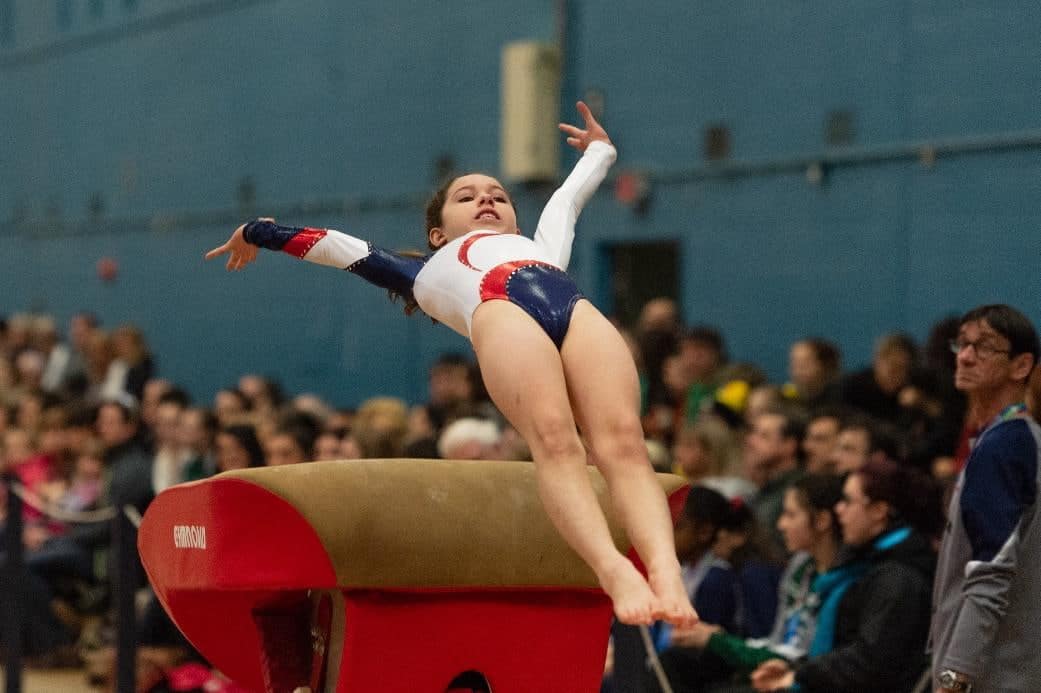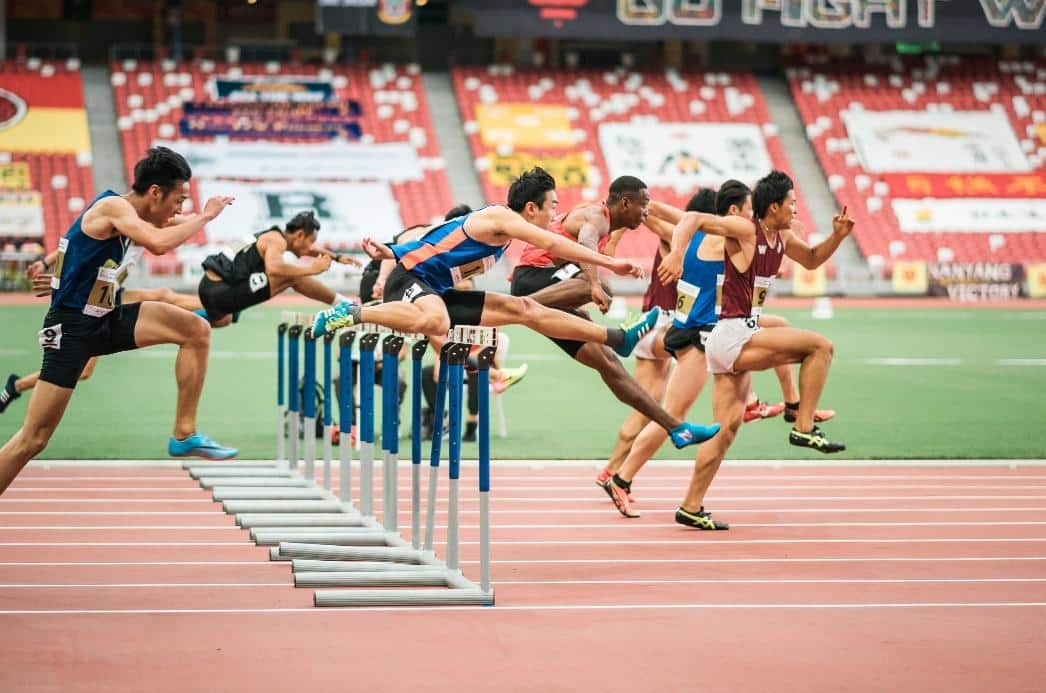30 de December de 2023
The SAID Principle: How to Design an Effective S&C Program
What’s the SAID Principle?

The SAID principle owes its name to the acronym from the English phrase “Specific Adaptations to Imposed Demands” (Fisher & Csapo, 2021). The SAID principle establishes that the human body will adapt specifically in response to the demands and stresses imposed upon it (Pearson et al., 2000). In simple terms, the SAID principle means that if we want to jump higher for volleyball spikes, we should train the muscles and mechanics specific to the jumping motion. However, if we are swimmers, the specific training will be different. It’s possible that sports as different as volleyball and swimming may even have similar general components, but we must subject them to the specific demands and stresses of the discipline to be able to apply more strength and power in the future through training.
The SAID principle is one of the principles of sports training that must be followed when designing an effective strength and conditioning program. Generally, the SAID principle is known as the “principle of specificity,” so you may also find it under that name. Along with the SAID principle, or specificity, we find others such as supercompensation (after training, we achieve higher levels of performance), progressive overload (increasing intensity or volume to generate new adaptations), and many others.
These principles are part of a sports periodization approach used to manage athletes’ performance by subdividing training programs into sequential and specifically planned training periods. The concept of strength and conditioning periodization seems to originate from the General Adaptation Syndrome (GAS) proposed by Hans Selye (Selye, 1938). GAS means that our body adapts to the stimuli received, whether we want to improve in a sports gesture or need to vary the stimulus to avoid stagnation. Therefore, through specific training, we aim to generate increasingly greater adaptations that make us better athletes in our specific discipline.
How Does it Work?

The athletic population is often treated much like a product manipulated at an industrial level, with predetermined protocols and little consideration for the athlete’s specificity or the demands of the sport (Sevier, T. L., Wilson, J. K., & Helfst, B. 2000). Hence, the typical phrase “one size fits all” arises when prescribing different variables without fully understanding the demands of the sport or the individual needs of each athlete.
The SAID principle states that if an athlete performs a slow squat, their tissues and neural connections will adapt to that imposed demand. If their sport is powerlifting, which does not require applying force in minimal time, the transfer to the discipline will be correct. However, if we need to apply a peak force in the shortest time possible for jumping or changing direction, the slow squat will not be optimal (Hawley, 2008).
Similarly, a baseball pitcher and a batter have similar needs, such as transferring force from the legs to the hands with trunk rotation, but each has their own specific requirements. Just like the other team players will have their own, as is the case in team sports according to the position played. Each athlete’s training method should be specific to them and their position and sport; this is how the SAID principle functions, ensuring that the athlete adapts to the stimulus received for maximum transfer to the sporting gesture.
How to Design an Effective Strength and Conditioning Program Following the SAID Principle
According to the SAID principle, training induces specific adaptations that predominantly transfer to tasks with similar physiological and/or biomechanical characteristics. When training to adhere to the SAID principle, exercise selection should be tailored to closely match the specific athletic performance tasks relevant to the sport.
Specificity may encompass various subcomponents, but in addition to obvious parameters (involvement of relevant muscle groups, activation at relevant joint angles, and contraction velocities), consideration should also be given to the specificity of the force vector (Contreras et al., 2017). In summary, exercises should closely resemble and mimic the demands of competition in sports.
Force Vector as a Specific Biomechanical Aspect

It’s common to train without considering the force vector present in the sport, thus missing out on one of the key aspects of the SAID principle. Squats and vertical plyometric exercises have a vertical force vector that will predominantly transfer to functional performances with a similar force vector, such as vertical jumping. Conversely, hip thrusts and horizontal plyometric jumps may predominantly transfer to performance tasks characterized by horizontal displacement of the center of mass, such as horizontal jumps, linear speed sprints, and speed sprints with changes of direction (Contreras et al., 2017).
It sounds simple, doesn’t it? However, this topic is much more complex as it requires a thorough understanding of the biomechanics of the sport and the movements executed within it (Junge et al., 2023; Loturco et al., 2018; Williams et al., 2021). For example, a low-speed sprint is associated with a leaning posture, a horizontally oriented force vector, and predominant involvement of knee extensors, while a high-speed sprint is performed with an upright posture, a vertically oriented force vector, and predominant involvement of hip extensors (Junge et al., 2021).
Therefore, when analyzing our sport, we must consider the force vectors involved, whether it’s for vertical jumps, high-speed directional changes, or achieving maximum acceleration in minimal time. The force vector is also taken into account in upper limb movements, as we don’t move our arms the same way when spiking in volleyball, making a tight pass in basketball, or throwing a javelin. To achieve specific adaptations, we must analyze each sports gesture and prescribe training variables accordingly.
In Vitruve’s blog, we have several articles analyzing the demands of sports such as hockey, boxing, baseball pitchers, baseball batters, and how to analyze key performance indicators of athletes in general. These are the main elements that bring us closer to sporting victory. In your sport, or your athlete’s sport discipline, there are different physiological and biomechanical aspects to consider when designing an effective strength and conditioning program aimed at maximizing performance improvement. The force vector is one of them, but there are more aspects to consider, which we’ll discuss in the next section.
Identifying Muscular Engagement and Speed in Sports Movements

By now, we’re well aware that the SAID principle pertains to specificity in training to produce necessary adaptations in our sports discipline. In the previous section, we discussed the role of the force vector in training. For instance, if I want to throw a straight punch in boxing, the force vector will be horizontal, completely different from the vertical force vector of a weightlifter during a clean and jerk when pushing the bar upward.
The trained musculature and the way we train also determine the specificity of the training. While coaches and athletes know they need to train the muscles involved in the sports discipline, they often overlook the speed at which they do so. This is why we often see cases where the program is well-designed because the trained muscles and force vector are appropriate, but the athletes aren’t executing the movement at maximum intentional speed.
The vast majority of sports movements require applying force in the shortest time possible, yet we don’t specifically train for it. Whether due to the coach’s unawareness, lack of motivation, or absence of technology to measure speed and power, execution speed is a crucial factor of sports specificity that still eludes us. Measurement devices like Vitruve expose real-time variables such as displacement speed, power, range of motion, and other data that we’ll consider to adhere to the SAID principle.
The Many Benefits of Velocity-Based Training (VBT)
The scientific evidence supporting velocity-based training (VBT) as a new paradigm in strength training is overwhelming. Without delving into technical aspects, simply by observing the speed at which we are moving the bar or the power we are applying in a vertical jump, the athlete becomes motivated and wants to perform faster. If our goal is to apply maximum speed in the movement, we’ve already made significant progress. When prescribing exercises, we’ll ask the athlete to move at maximum speed, and thanks to devices like Vitruve, the athlete can see that data and become motivated.
The Force-Velocity Curve
The force-velocity curve ranges from one extreme where the load is maximal and the speed minimal, to the other end of the curve where the load is minimal and the speed is maximal. Between these extremes, there are different force-velocity points that are crucial for our sport. Each discipline has its own force-velocity profile, and a specific zone on the force-velocity curve that we should focus on more. If we aim for an effective strength and conditioning program following the SAID principle, we must understand the athlete’s force-velocity profile and the zone of the force-velocity curve they should work on.
It’s very challenging to prescribe sessions based on speed if we don’t have an encoder like Vitruve’s to know that data. With Vitruve’s encoder, each athlete will train with the load associated with the speed we seek in the speed zone, which will help them adapt to that speed, crucial for their sport. One cannot discuss the SAID principle without considering the specific speed of the sports gesture, which is vital for generating optimal adaptations for the sports discipline. Therefore, an effective strength and conditioning program will also focus on the specific speed of the sports gesture.
General Precedes Specificity: Understanding the Foundation

We can make a specificity error by underapplying the SAID principle, but also by overapplying it. Improving force application in the final gesture is the fundamental goal of a good strength and conditioning program, but that doesn’t mean that all the workload should be focused solely on the force vector of that gesture, its main muscles, or its speed. Sports periodization involves several phases, starting with a general phase where we perform tasks unrelated to the actual sports gestures, and ending with a specific phase where we apply everything discussed in the article: specific muscles, specific force vector, and the speed inherent to the sports gesture.
Training for too long or too short a time in any phase of sports periodization will result in suboptimal transfer of strength and power. In many cases, there is an excess of specific work without a general base, or vice versa. Ideally, sports periodization should aim towards the sports gesture itself, with backward planning involving mesocycles and microcycles to reach that goal. A very simple example is starting with heavy hip thrusts in the general phase, moving on to dragging a heavy sled, then a lighter sled, training plyometrics with horizontal jumps, and finishing with accelerations from a standstill. This sequence progresses from general to specific, working in different zones of the force-velocity curve.
Messages to Take to the Gym
The SAID principle establishes that the human body will adapt specifically in response to the demands and stresses imposed upon it. According to the SAID principle, training induces specific adaptations that predominantly transfer to tasks with similar physiological and/or biomechanical characteristics. When designing an effective strength and conditioning program, we need to clarify the athlete’s and sport’s requirements and seek to improve them through exercises that stimulate the same musculature, in the same force vector, and at the same execution speed.
We’ll start with a general foundation using general and heavier exercises before progressing to sport-specific movements, which may be more or less explosive. Depending on the sport, we may need to spend more time in a zone of the force-velocity curve where the focus is on the load moved, regardless of speed (e.g., powerlifting), a sport that requires heavy loads at high speeds (e.g., weightlifting), or sports disciplines that demand force application in the shortest time possible (e.g., boxing punches, baseball batting, or jumps in basketball or soccer).
The more specific we are with the programmed stimuli, the more physiological and biomechanical transfers we’ll achieve in the athlete’s sport and competitive gestures. That’s the most effective way to design an efficient strength and conditioning program.
References
Contreras, B., Vigotsky, A. D., Schoenfeld, B. J., Beardsley, C., McMaster, D. T., Reyneke, J. H. T., & Cronin, J. B. (2017). Effects of a Six-Week Hip Thrust vs. Front Squat Resistance Training Program on Performance in Adolescent Males: A Randomized Controlled Trial. Journal of Strength and Conditioning Research, 31(4), 999–1008. https://doi.org/10.1519/JSC.0000000000001510
Fisher, J. P., & Csapo, R. (2021). Periodization and Programming in Sports. Sports, 9(2), 13. https://doi.org/10.3390/SPORTS9020013
Hawley, J. A. (2008). Specificity of training adaptation: time for a rethink? The Journal of Physiology, 586(Pt 1), 1. https://doi.org/10.1113/JPHYSIOL.2007.147397
Junge, N., Jørgensen, T. B., & Nybo, L. (2023). Performance Implications of Force-Vector-Specific Resistance and Plyometric Training: A Systematic Review with Meta-Analysis. Sports Medicine, 1–15. https://doi.org/10.1007/S40279-023-01902-4/FIGURES/7
Junge, N., Lundsgaard, A., Hansen, M. F., Samozino, P., Morin, J. B., Aagaard, P., Contreras, B., & Nybo, L. (2021). Force-velocity-power profiling of maximal effort sprinting, jumping and hip thrusting: Exploring the importance of force orientation specificity for assessing neuromuscular function. Journal of Sports Sciences, 39(18), 2115–2122. https://doi.org/10.1080/02640414.2021.1920128
Loturco, I., Contreras, B., Kobal, R., Fernandes, V., Moura, N., Siqueira, F., Winckler, C., Suchomel, T., & Pereira, L. A. (2018). Vertically and horizontally directed muscle power exercises: Relationships with top-level sprint performance. PLOS ONE, 13(7), e0201475. https://doi.org/10.1371/JOURNAL.PONE.0201475
Pearson, D., Faigenbaum, A., Conley, M., & Kraemer, W. J. (2000). The National Strength and Conditioning Association’s Basic Guidelines for the Resistance Training of Athletes. Strength and Conditioning Journal August, 22(4), 14–27.
Selye, H. (1938). EXPERIMENTAL EVIDENCE SUPPORTING THE CONCEPTION OF “ADAPTATION ENERGY.” Https://Doi.Org/10.1152/Ajplegacy.1938.123.3.758, 123(3), 758–765. https://doi.org/10.1152/AJPLEGACY.1938.123.3.758
Williams, M. J., Gibson, N. V., Sorbie, G. G., Ugbolue, U. C., Brouner, J., & Easton, C. (2021). Activation of the Gluteus Maximus During Performance of the Back Squat, Split Squat, and Barbell Hip Thrust and the Relationship With Maximal Sprinting. Journal of Strength and Conditioning Research, 35(1), 16–24. https://doi.org/10.1519/JSC.0000000000002651

